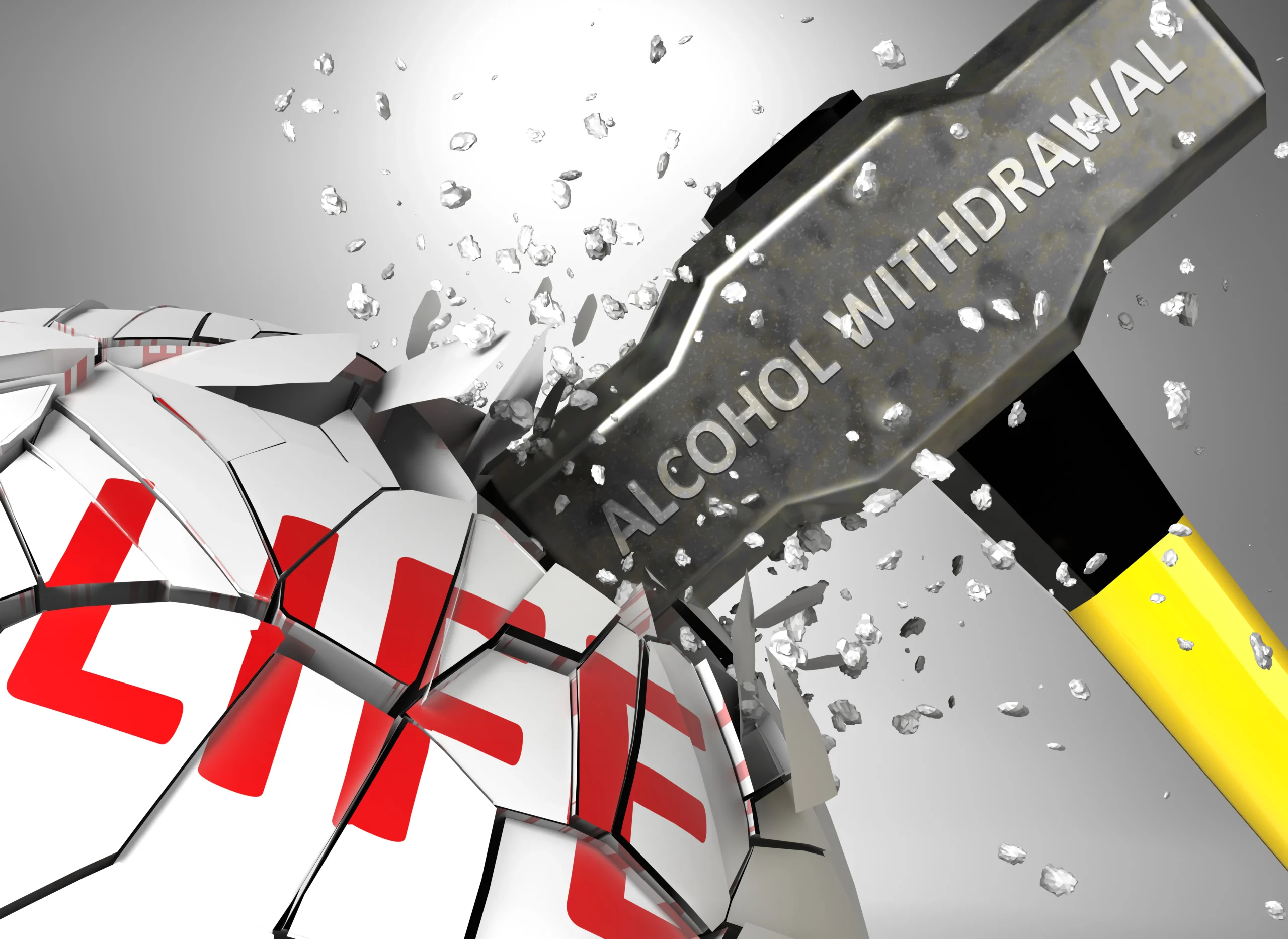Blog
CIWA Protocol | 10 Symptoms Doctors Track

Ever wonder how doctors figure out CIWA Protocol alcohol withdrawal is getting dangerous? They’re not just eyeballing it. There’s this scoring system called CIWA that measures 10 specific symptoms to see how bad things are and what medication you need.
What CIWA Actually Does
CIWA stands for Clinical Institute Withdrawal Assessment for Alcohol, Revised. Yeah, it’s a mouthful. Everyone just says CIWA. Takes about 5 minutes for a nurse or doctor to run through it. They look at you, ask questions, check physical symptoms, write down numbers for 10 different things.
Those numbers add up to a score. That score tells them if you’re dealing with mild withdrawal or if you’re heading toward the scary stuff. Beats the hell out of guessing based on how rough someone looks.
Breaking Down the 10 Symptoms
Nine symptoms get scored 0 to 7. One goes 0 to 4. Higher numbers mean you’re in worse shape. Here’s what they’re checking:
The odd one out – only scored 0 to 4. Checks if you know where you are, what day it is, who you’re talking to, if your thinking’s clear. Score 0 means you’re totally alert and oriented. Score 4 means serious confusion – not sure where you are, what’s happening, maybe not even who you are. Huge red flag for dangerous complications.
Reading Your Score
Add up all 10 and you get a number somewhere between 0 and 67. Here’s what it means:
Below 8 or 10 means mild withdrawal. Probably won’t get meds yet, but they’ll keep tabs on you to catch it if things get worse.
8 to 15 is moderate withdrawal. Most hospitals start medication here – benzodiazepines like Valium or Ativan calm your nervous system. How much depends on your exact score.
15 or up is severe withdrawal. Real risk for delirium tremens, which kills about 5% of people who develop it. Bigger medication doses and much closer monitoring – checks every hour or two.
Why This Approach Works
Smart thing about CIWA is symptom-triggered treatment. Instead of identical doses for everyone on a fixed schedule, doctors adjust based on what’s happening with you right now. Score climbs, you get more meds. Score drops, they ease off. Uses less medication and gets people through withdrawal faster than the old method. Research backs it up – better outcomes, fewer complications. They recheck your CIWA score regularly. Maybe hourly when you’re struggling, then spreading it out to every few hours as you stabilize. Watching for patterns. Getting better or worse? Medication working? Need to change the plan?
Don’t Minimize Your Symptoms
Someone using CIWA on you? Be straight about what you’re experiencing. Seeing things? Tell them. Anxiety through the roof? Speak up. Scores only help if they’re accurate. Doctors can only treat what they know about. Don’t try acting tough because you’re embarrassed. Medical staff have seen everything. Their job is keeping you safe, not judging your choices. Difference between scoring a 7 versus a 10 might determine whether you get medication. Even low scores deserve attention. Not hallucinating doesn’t mean your withdrawal is easy or risk-free. People with relatively low scores still run into complications without proper monitoring.
What’s Happening in Your Body
Alcohol withdrawal happens because your body got used to constant alcohol. Remove it and your nervous system goes haywire trying to readjust. All these symptoms? That’s your brain chemistry recalibrating. It’s brutal. Both your mental health and physical health take a beating during withdrawal. Anxiety, confusion, and hallucinations mess with your head while tremors, sweating, and nausea wreck your body.
Medical supervision matters because withdrawal hits everything at once. CIWA gives doctors a standardized measurement instead of guesswork. Before tools like this, treatment was all over the map. Some people got way too much medication, others not enough. Now there’s a system catching problems early and letting staff adjust treatment based on actual data. Understanding your health and wellness starts with knowing what’s happening in your body. CIWA isn’t just about numbers – it’s recognizing when someone needs help and getting them proper treatment before things spiral.
These 10 symptoms weren’t picked randomly. They show up most often during withdrawal and tracking them helps predict who’s going to have a dangerous time versus who’ll get through okay.
Get Medical Help
Thinking about quitting after drinking heavily for a while? Don’t try it alone. Alcohol withdrawal can kill you. No way to predict if you’ll have a mild case or end up in serious danger. Medical detox facilities and hospitals use CIWA because they can check on you regularly and adjust treatment as needed. Those 10 symptoms they’re tracking aren’t trivia – they’re warning signs keeping people alive. Need help with alcohol use?. They connect you with local treatment options using protocols like CIWA to keep you safe during withdrawal. Changing your lifestyle around alcohol takes guts. Whether you’re cutting back or quitting completely, proper medical support during withdrawal is step one. Your body needs time to heal, and CIWA helps make sure that healing happens safely. Making changes to your relationship with alcohol is one of the most important health and wellness decisions you can make. Whether you’re worried about your drinking or helping someone who is, understanding the medical process makes it less overwhelming. Recovery isn’t just getting through withdrawal – it’s building a lifestyle supporting your long-term wellbeing.
Getting through alcohol withdrawal is rough, but knowing what doctors look for and why they check these specific symptoms makes it less terrifying. CIWA protocol isn’t perfect. It’s one of the better tools we’ve got for turning a potentially deadly situation into something manageable.
CIWA-Ar Protocol
Clinical Institute Withdrawal Assessment for Alcohol (Revised)
Mild Withdrawal
Monitor closely. Medication typically not required. Continue regular assessments.
Moderate Withdrawal
Initiate benzodiazepines or other symptom-triggered therapy. Reassess every 1-2 hours.
Severe Withdrawal
High risk for delirium tremens (DTs). Administer higher doses of medication. Intensive monitoring or ICU consideration may be needed.
Maximum Total Score: 67 points. The CIWA-Ar assesses 10 symptoms to determine withdrawal severity. Scores guide treatment decisions and monitoring frequency. Early recognition and appropriate intervention can prevent progression to severe complications.
10 Assessment Symptoms
Nausea and Vomiting
0-7 pointsAssesses severity from no nausea to constant nausea with dry heaves or vomiting.
Tremor
0-7 pointsEvaluates tremor in arms extended and fingers spread, from no tremor to severe even at rest.
Paroxysmal Sweats
0-7 pointsMeasures observable sweating, from none to drenching sweats.
Anxiety
0-7 pointsGauges acute anxiety levels, from none to equivalent to severe panic.
Agitation
0-7 pointsObserves behavioral restlessness, from normal to constant thrashing.
Tactile Disturbances
0-7 pointsChecks for paresthesias, numbness, or hallucinations like bugs crawling on skin.
Auditory Disturbances
0-7 pointsAssesses sensitivity to sounds or auditory hallucinations.
Visual Disturbances
0-7 pointsEvaluates photophobia or visual hallucinations.
Headache, Fullness in Head
0-7 pointsMeasures intensity from not present to extremely severe.
Orientation and Clouding of Sensorium
0-4 pointsTests orientation to time, place, person; from fully oriented to disoriented and unresponsive.
Assessment Process Flow
Evaluate Symptoms
Assess all 10 criteria with patient input and observation
Calculate Score
Sum individual symptom scores (max 67 points)
Determine Treatment
Based on total score, administer appropriate medication
Monitor & Reassess
Repeat CIWA-Ar at intervals based on severity
References
- Sullivan JT, Sykora K, Schneiderman J, Naranjo CA, Sellers EM. Assessment of alcohol withdrawal: the revised clinical institute withdrawal assessment for alcohol scale (CIWA-Ar). British Journal of Addiction. 1989;84(11):1353-1357.
- American Society of Addiction Medicine. The ASAM Clinical Practice Guideline on Alcohol Withdrawal Management. Journal of Addiction Medicine. 2020;14(3S Suppl 1):1-72.
- Substance Abuse and Mental Health Services Administration (SAMHSA). Detoxification and Substance Abuse Treatment. Treatment Improvement Protocol (TIP) Series 45. HHS Publication No. (SMA) 15-4131. Rockville, MD: SAMHSA; 2015.
- Mirijello A, D’Angelo C, Ferrulli A, et al. Identification and management of alcohol withdrawal syndrome. Drugs. 2015;75(4):353-365.
- National Institute on Alcohol Abuse and Alcoholism (NIAAA). Treatment for Alcohol Problems: Finding and Getting Help. NIH Publication No. 14-7974. Bethesda, MD: NIAAA; 2014.
